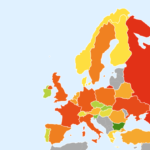Silver tracked golds downward direction and extended losses on Monday, trading near its 33-month low.
On the Comex division of the New York Mercantile Exchange, silver futures for September delivery fell 1.43% for the day. The precious metal traded at $19.715 a pound at 10:16 GMT, ranging between daily high and low at $20.197 and $19.513 respectively. Silver kept falling throughout most of last week, pressured by the stronger dollar. Silver prices tumbled to $19.31 a troy ounce on Friday, the weakest level since September 2, 2010. and rebounded later, regaining 2.43%. However, the metal marked a weekly loss of near 9%.
Precious metals were hammered last week as Feds chairman, Ben Bernanke, said the central bank might scale back its monetary stimulus program during the second half of the year and end it by mid-2014. According to Bernanke, Fed’s moves are tied to what happens in the economy and the central bank has no fixed plan, but sentiment points at reducing bond purchases. Bernanke said that if the economy continues to improve in line with Fed’s projections, it would be “appropriate to moderate the monthly pace of purchases later this year”, and end the program as the unemployment rate drops do 7%, which the central bank expects to happen around mid-2014.
The U.S. central bank is projecting the nation’s economy to expand by 2.3% to 2.6% in 2013 and the unemployment rate to shrink to between 6.5% and 6.8% by the end of 2014, which should bring the bond purchasing to an end.
News on the monetary stimulus caused the dollar to surge and erase earlier losses. The dollar index, which tracks the greenbacks performance versus a basket of six major counterparts, pushed almost all commodities down and ended the week 2.21% higher. On Monday, the dollar gauge extended gains, trading at 82.76 at 10:11 GMT, 0.18% higher on the day.
The greenback and silver tend to trade inversely. A stronger dollar weighs on dollar-priced commodities as it curbs their appeal as an alternative investment and also makes them more expensive to foreign currency holders. Stable and low inflation in the U.S. reduced demand outlook for precious metals, which are used as a hedging strategy against inflationary effects. U.S. data revealed last week that Core CPI, which excludes the more volatile energy and food prices, rose only by 0.2% compared to 0.1% in April and met projections. On an annual basis Core Consumer Price Index also met expectations and remained the same compared to May 2012 at 1.7%. CPI for May was even lower than anticipated and stood at 0.1%, below forecasts for a 0.2% increase.
Investors are now looking ahead into this week’s key U.S. economic data, which, if positive, will spur further speculation over an earlier-than-expected Quantitative Easing scale down and will support precious metals’ bearish sentiment. Durable goods orders, consumer confidence and new home sales are due on Tuesday. Scheduled for Wednesday are the final Q1 GDP and Consumer Spending readings. On Thursday, initial jobless claims will give some preliminary information for the unemployment rate in the world’s biggest economy.
Elsewhere on the market, gold, platinum and palladium are also marking daily losses. Gold for August delivery traded at $1 284.55 at 10:20 GMT, down 0.58% on the day. The yellow metal ranged between days high and low at $1 300.55 and $1 277.65. Platinum October futures stood at $1 363 an ounce, down 0.77%, varying between days high and low at $1 382.25 and $$1 356.55 respectively. Palladium for September delivery traded at $673.20 an ounce, marking a 0.23% loss at 10:20 GMT.





